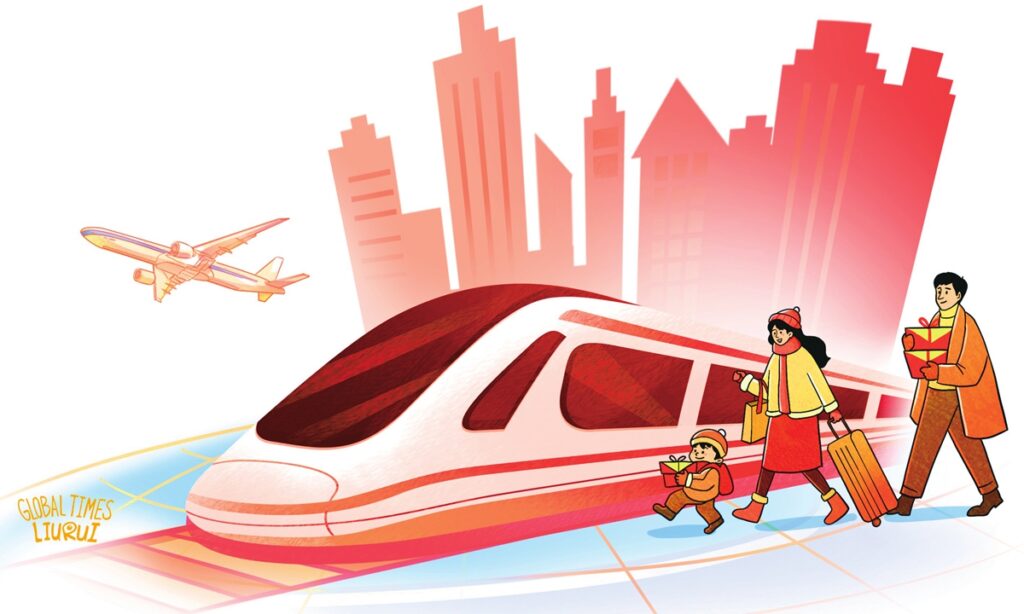The Spring Festival travel rush in China kicked off on Tuesday. This is the first Spring Festival travel rush following the announcement of an eight-day Spring Festival holiday, the expansion of visa-free policies, and the official inscription of the Spring Festival on the UNESCO list of Intangible Cultural Heritage of Humanity.
Approximately 9 billion inter-regional trips are expected during the 40-day travel surge, with passenger volumes for both rail and civil aviation trips also set to hit record highs, according to the National Development and Reform Commission.
The Spring Festival travel rush epitomizes China’s rapid economic and social development. This phenomenon is rooted in China’s ever-growing economy, rapid infrastructure development, and the surge in living standards.
Moreover, the blending of culture, tourism, and transportation enables traditional festivals, such as the Spring Festival, to take on new forms. It’s no longer just a rush to return home; rather, it has become a manifestation of the integration of culture and tourism. Traveling during the Spring Festival has emerged as a new trend, showcasing the creative transformation and innovative development of modern Chinese Spring Festival culture, according to Sun Jiashan, an associate researcher from the Central Academy of Culture and Tourism Administration.
This year’s Spring Festival travel may feature more international factors than ever before. According to data from Chinese travel service website Ctrip, the number of travel orders from foreign tourists to China during this year’s Spring Festival holiday increased by more than 200 percent year-on-year. Orders from South Korean tourists increased by 452 percent year-on-year, while Singapore, Japan and the US are also significant source countries of foreign tourists visiting China.
This is closely tied to China’s gradual expansion of its list of unilateral visa-free countries and the extended visa-free entry policy in 2024. Currently, ordinary passport holders from above 38 countries are exempted from requiring a visa to enter China (they can stay for no more than 30 days). The stay duration for foreign nationals eligible for visa-free transit has been extended from the previous 72 hours and 144 hours to 240 hours (10 days). An increasing number of foreign visitors are eager to experience traditional activities celebrating the Spring Festival. Moreover, foreigners are no longer just visiting first- and second-tier cities; they are increasingly exploring third- and fourth-tier cities to learn more about China.
This reflects the allure of the intangible cultural heritage associated with, but not limited to, the Spring Festival, as well as China’s ongoing efforts to open up to the world.
The Spring Festival travel rush is not merely an emotional connection for the Chinese people; it also reflects China’s cultural soft power and international influence. It serves as a unique bridge linking China to the world, showcasing the charm of Chinese culture.
This travel rush, which symbolizes the deep-seated emotions of the Chinese nation, uniquely captures the country’s development and opening-up, while also highlighting the vibrancy of China and the improving living standards of its people.
GT




